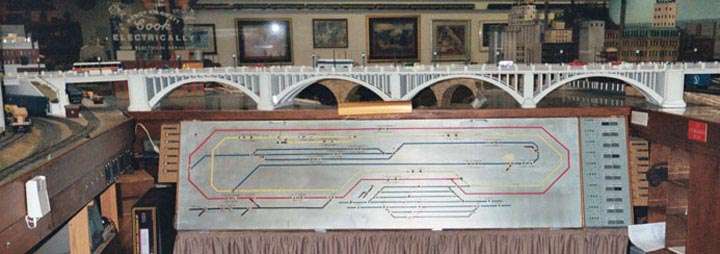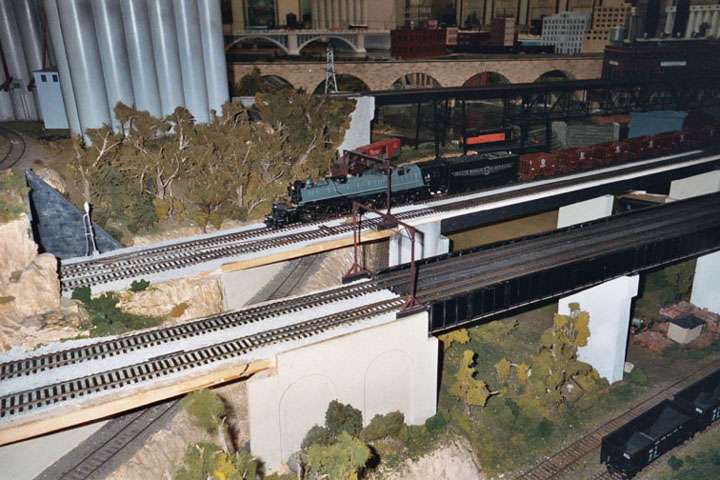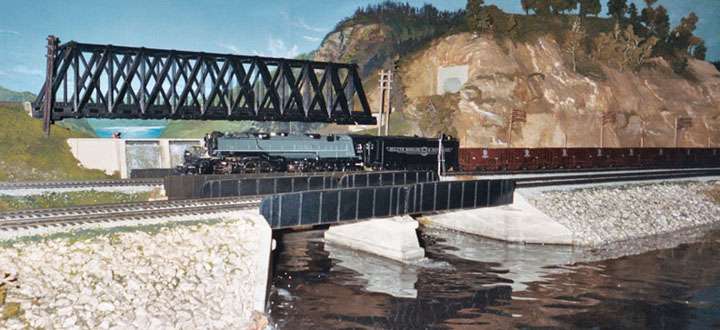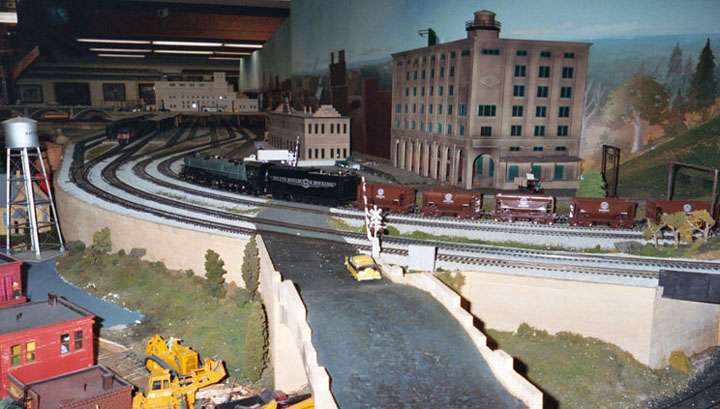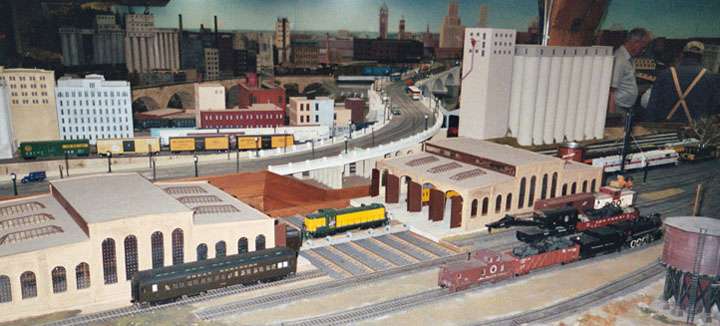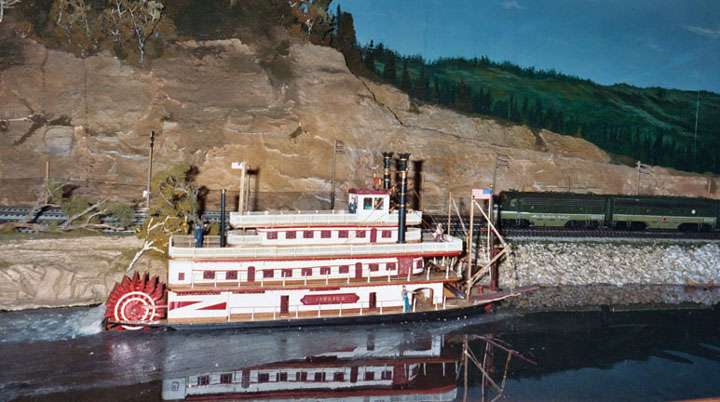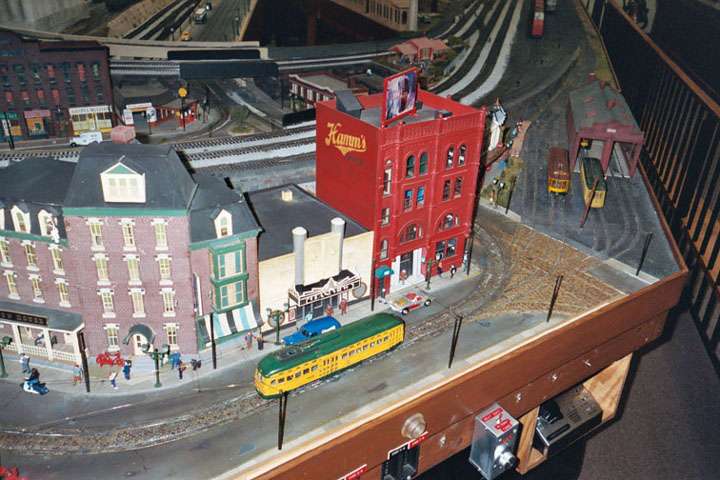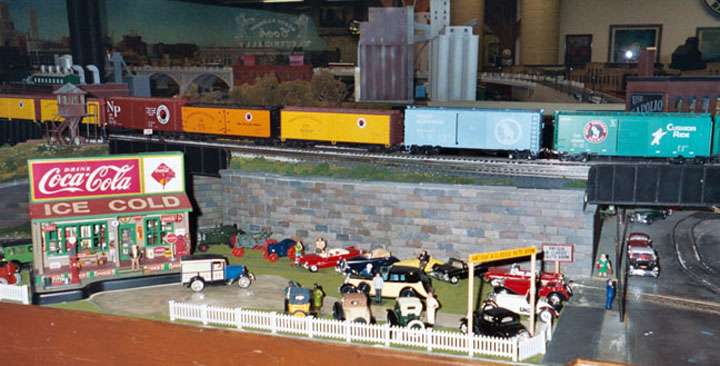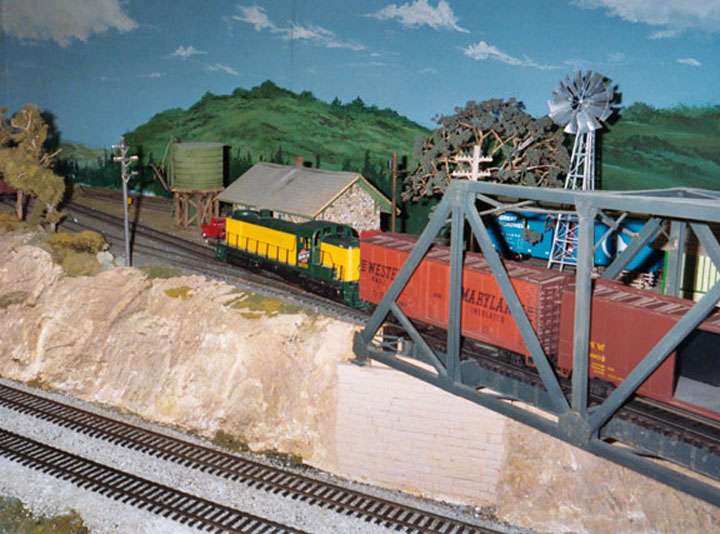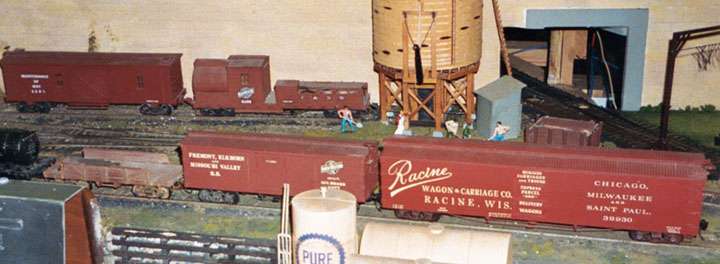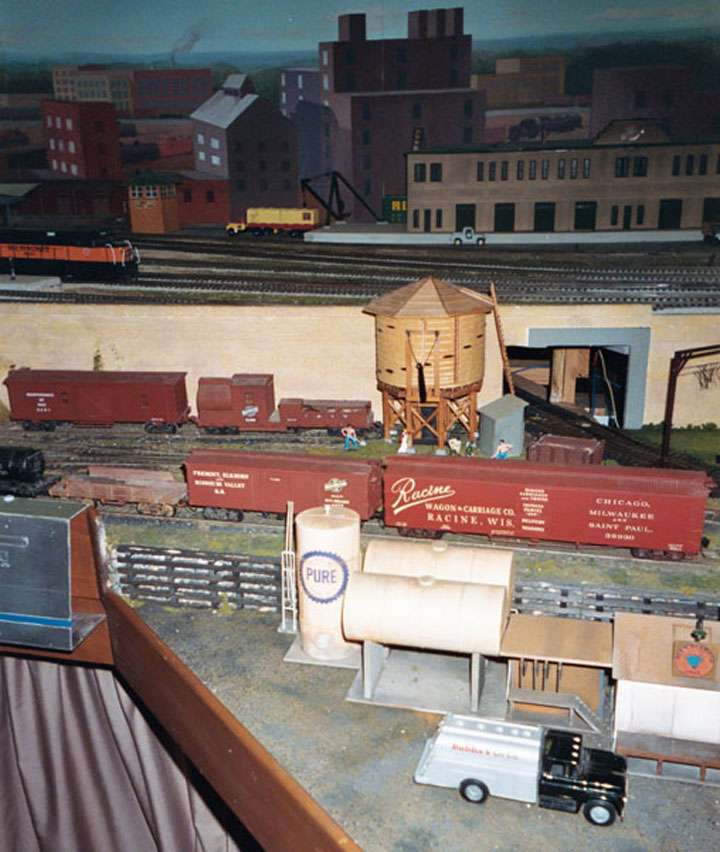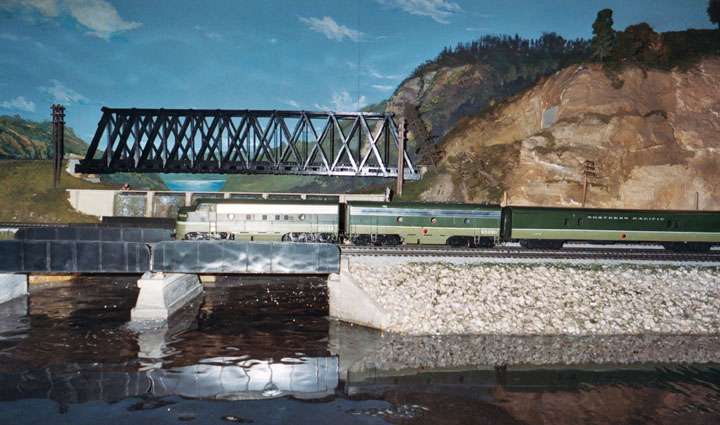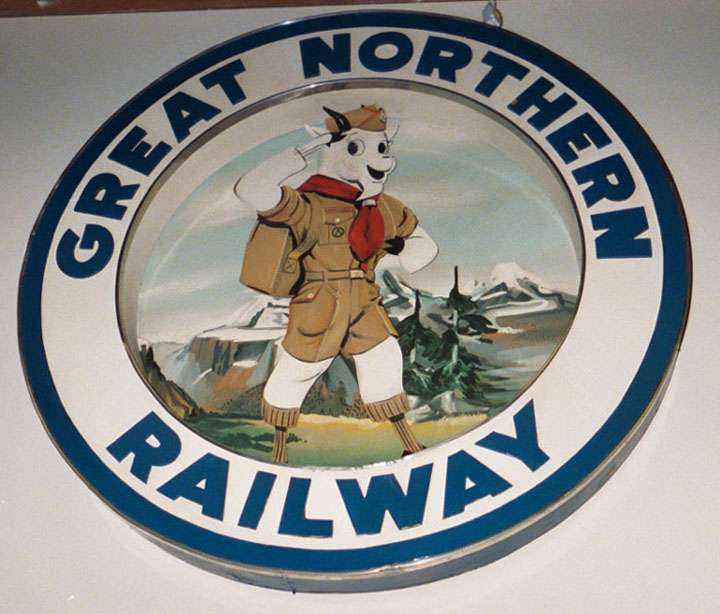A Visit to the Twin City Model Railroad Museum
By Bill Fuller
What to do? What to do? There I was stuck for two days in St. Paul , Minnesota , while my wife was delivering a presentation at an educational technology workshop, and the hotel room was hardly an inspiring place to hang out. Rummaging through the desk drawers in the room did, however, produce a fat volume of Yellow Pages, so naturally I started hunting for any hobby shops that might be lurking in the Minneapolis — St. Paul area and which were located somewhat near the hotel since getting hopelessly lost in Twin City traffic was not on my agenda. Aha! Here’s one called the Como Shops, and I can probably get to it with an acceptable level of confusion over the unfamiliar street layout.
Okay, off I go down Lexington Parkway and Energy Park Drive to Bandana Square . Say, this place is neat. The shops and offices in Bandana Square are in an old, renovated railroad shop building. A derelict 0-8-0 switcher sits between the building and the street, making for a recognizable landmark. She reminds me of my MTH C&NW switch engine, although mine is in arguably better condition, both cosmetically and operationally. Okay, it’s time to locate the hobby shop.
Ah, there it is, but I’m too early. The store’s not open yet. But what’s this? I see a sign pointing upstairs to something called the Twin City Model Railroad Museum . What a nice surprise—I didn’t know this was here. These folks want $2 from me to get beyond the door, but from what I can see it’s going to be worth that much, at least.
Wow! This is the largest O scale layout I’ve ever had the joy of seeing! Of course, not everything in life is always perfect. The folks who modeled this magnificent layout mislaid one of the rails from their trackage, for I can find only two rails. The center rail is surely missing. Nonetheless, even with that omission, this promises to be highly entertaining.
Oh my goodness, here comes an MTH DM&IR Yellowstone hauling an ore car train so long that it’s never all in view at one time. And there’s an operating transfer table, a turntable, and a Mississippi River steamboat with an operating stern wheel. Over there’s a hand-built trolley car system with individually scribed and colored bricks made from dental plaster paving the street. Careful around the overhead wires—they’re actually electrically charged.
And the buildings—tall grain silos rise along rail sidings; custom-designed bridges carry both rail and automotive traffic over rivers; “water” seems to cascade down spillways; eagles perch in the pinnacles of tall trees; a huge Great Northern passenger station seems to be a magnet for fleets of taxicabs; and an auto repair garage looks a bit idle, its open bay door revealing two mechanics bent over a card game instead of a car hood.
As for rolling stock, the tracks sport scores of cars that I recognize as the two-rail counterparts of Weaver, Atlas, and others that traverse three-rail tracks as well. In addition, though, quite a few scratch-built, handmade cars create unusual and seldom- seen designs and road names. My eye goes immediately to a boxcar lettered for the Elkhorn and Missouri Valley , a subsidiary of the C&NW. The only other place I’ve ever seen that name is on the former Elkhorn depot in Deadwood, South Dakota , a few miles from my house. Then I espy a single-sheathed, outside-braced caboose that brings to mind the Crown (now Weaver) outside-braced boxcars that first appeared a few years ago. I can’t wait for someone to reproduce that design in a ready-built model! And there sits a C&NW maintenance of way car sporting a horizontal wooden water tank next to a small tool storage shed and an open deck holding supplies exposed to the weather. What an ingenious car design! The three-rail manufacturers would do well to dispatch some of their product designers to pick up new ideas here.
Every now and then, just to relieve neck tension from staring at detail after detail on the walk-around layout, I glance up at the walls of the room. Railroad memorabilia of all sorts festoon these walls. One item in particular catches my attention—an original Great Northern “drumhead” sign that at one time graced the rear of a passenger train’s observation car. It features Rocky, the familiar GN goat, but this time the railroad’s mascot is attired in the summer uniform of a Boy Scout. Perhaps it’s a unique sign made for a special train carrying Scouts along the Great Northern’s route, and it must be nearly priceless to a collector of GN memorabilia.
For the fascination of its collections, both historical memorabilia and a fine operating layout, the Twin City Model Railroad Museum is well worth the travel and time required to reach the Minneapolis and St. Paul area. It would be a hard-boiled three-railer indeed who would not succumb to the detail of this fine two-rail layout. And, oh yes, there is a compact hobby shop at the foot of the stairs leading down from the museum and, yes, I did leave there with new D&RG and CGW cars for the three-rail layout awaiting me at home.
Oh, did I mention that the free, multi-level parking garage at one end of the parking lot overlooks a rather busy section of real railroad? From Soo Line engines pulling strings of largely BNSF mixed freight cars to CP trains to BNSF locomotives on the point of long intermodal freights, there’s plenty of activity there in 1:1 scale, too!

